How to pass variables or data to a Metal Shader in XCode
A step by step guide on creating a MTKView in a UIView and passing variables or structured data through "uniform" or "argument" buffers to the Metal shader.
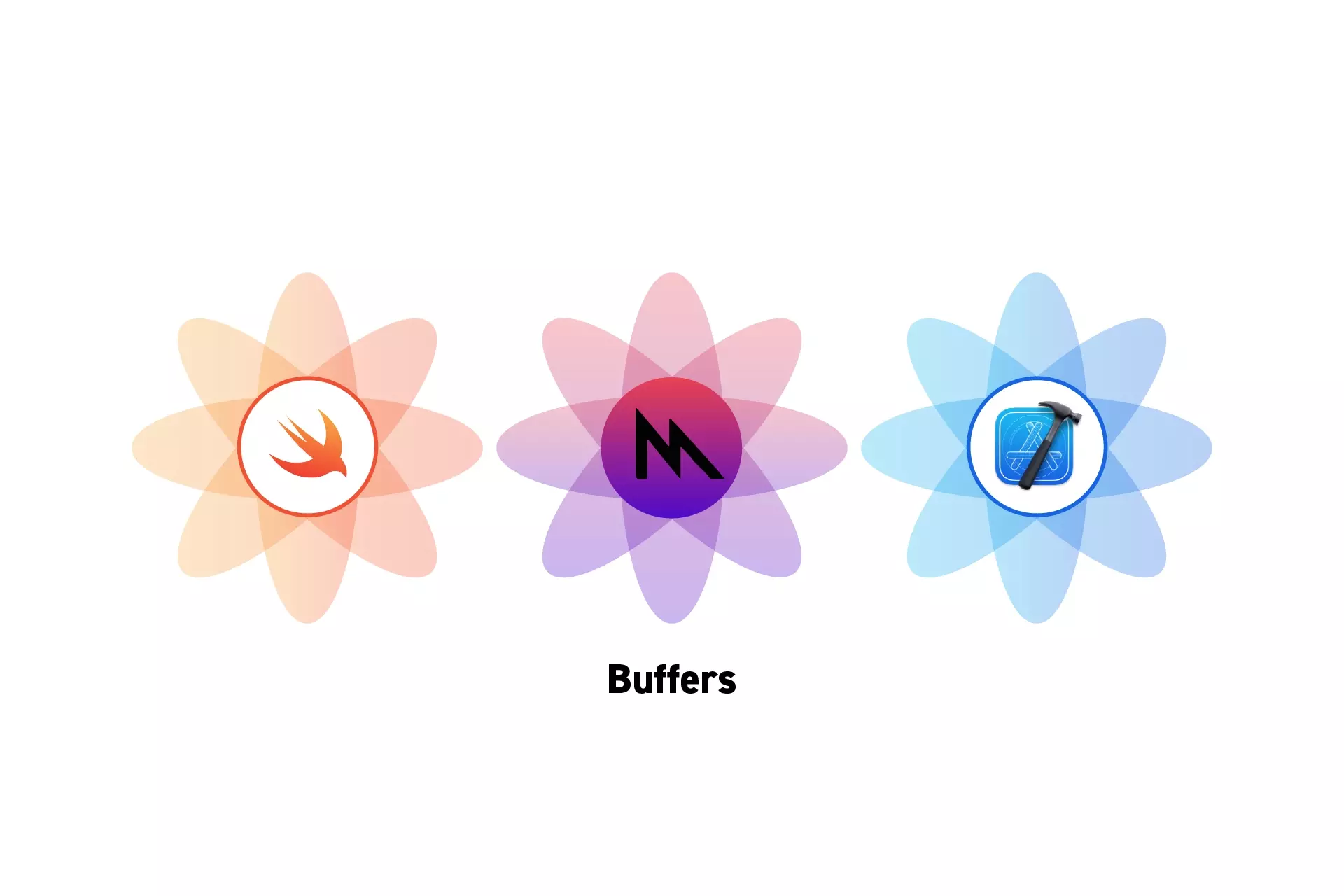
A step by step guide on creating a MTKView in a UIView and passing variables or structured data through "uniform" or "argument" buffers to the Metal shader.
SubscribeCheck out our Apple Metal Resources GuideWe recommend that you clone our Open Source Swift Starter Project, checking out the main branch and carrying out the steps below. The changes can be found on the tutorial/metal/buffers branch.
git clone git@github.com:delasign/swift-starter-project.gitWhat are Uniform or Argument Buffers ?
Uniform and Argument Buffers are two terms that are used for the different types of data that can be passed to a metal shader.
- Uniform buffers are used to pass constant data that remains constant for the entire duration of a draw call or dispatch call.
- Argument buffers are used to bundle resources and data required for a particular shader function into a single object. This allows you to group resources like textures, buffers, and samplers along with associated data (constants) needed for a specific shader invocation.
Tutorial
Step One: Setup the MTKView
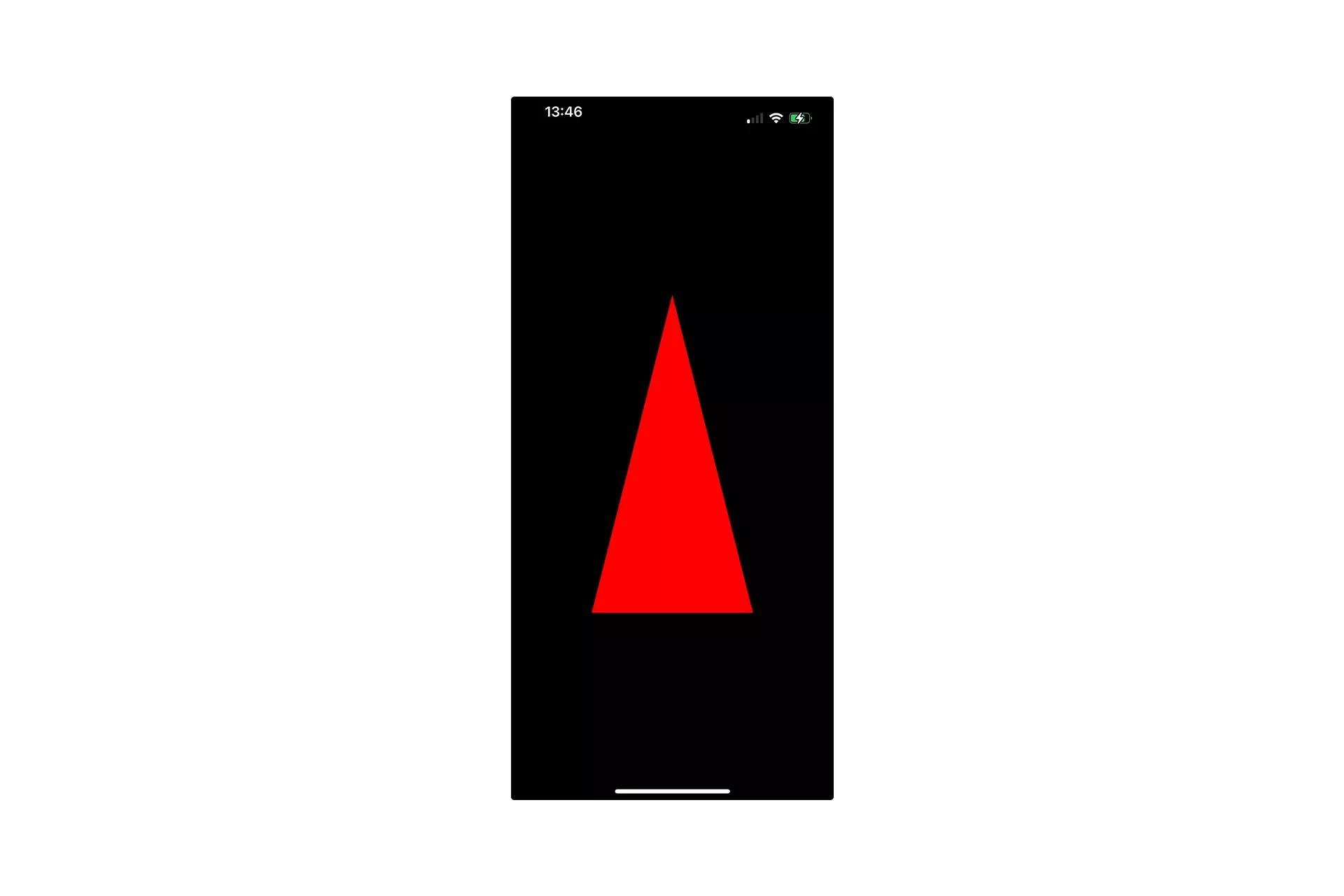
Follow the tutorial below to setup a MTKView within a UIView that shows a triangle.
Step Two: Pass Data to the Shader
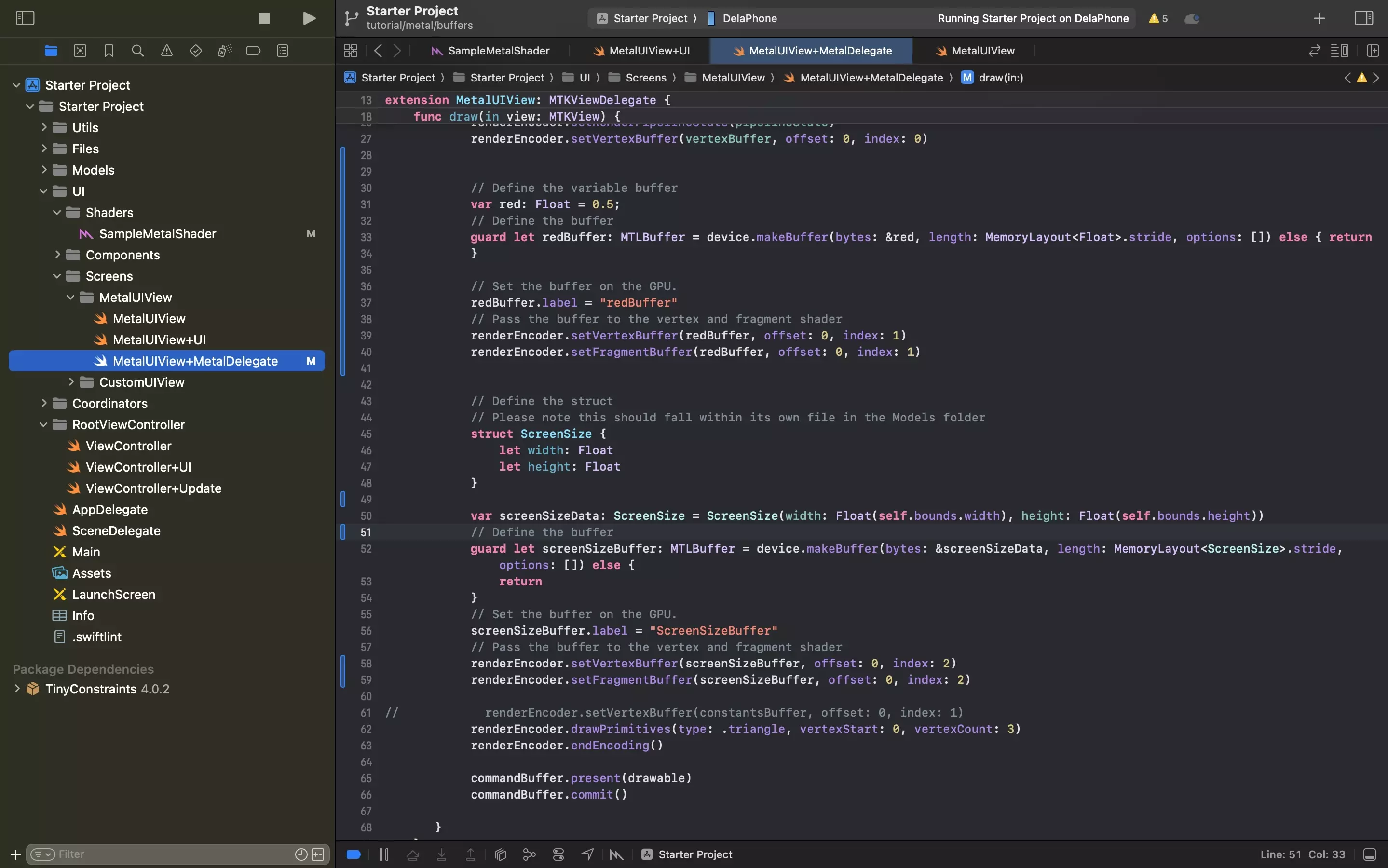
The following step demonstrates how to pass constants or structs to a Metal shader's vertex or fragment function in Swift.
This data must be defined and passed into the shader within the MetalUIView+MetalDelegate.swift file.
Please note that implementing the data within the vertex and fragment functions is described in the next step.
A | Variable
Declare a constant and create a buffer from it using code similar to the one below.
Please note that setVertexBuffer should be used to pass data to the vertex function and setFragmentBuffer should be used to pass data to the fragment function.
B | Struct
Declare a struct and create a buffer from it using code similar to the one below.
Please note that setVertexBuffer should be used to pass data to the vertex function and setFragmentBuffer should be used to pass data to the fragment function.
Step Three: Update the Shader
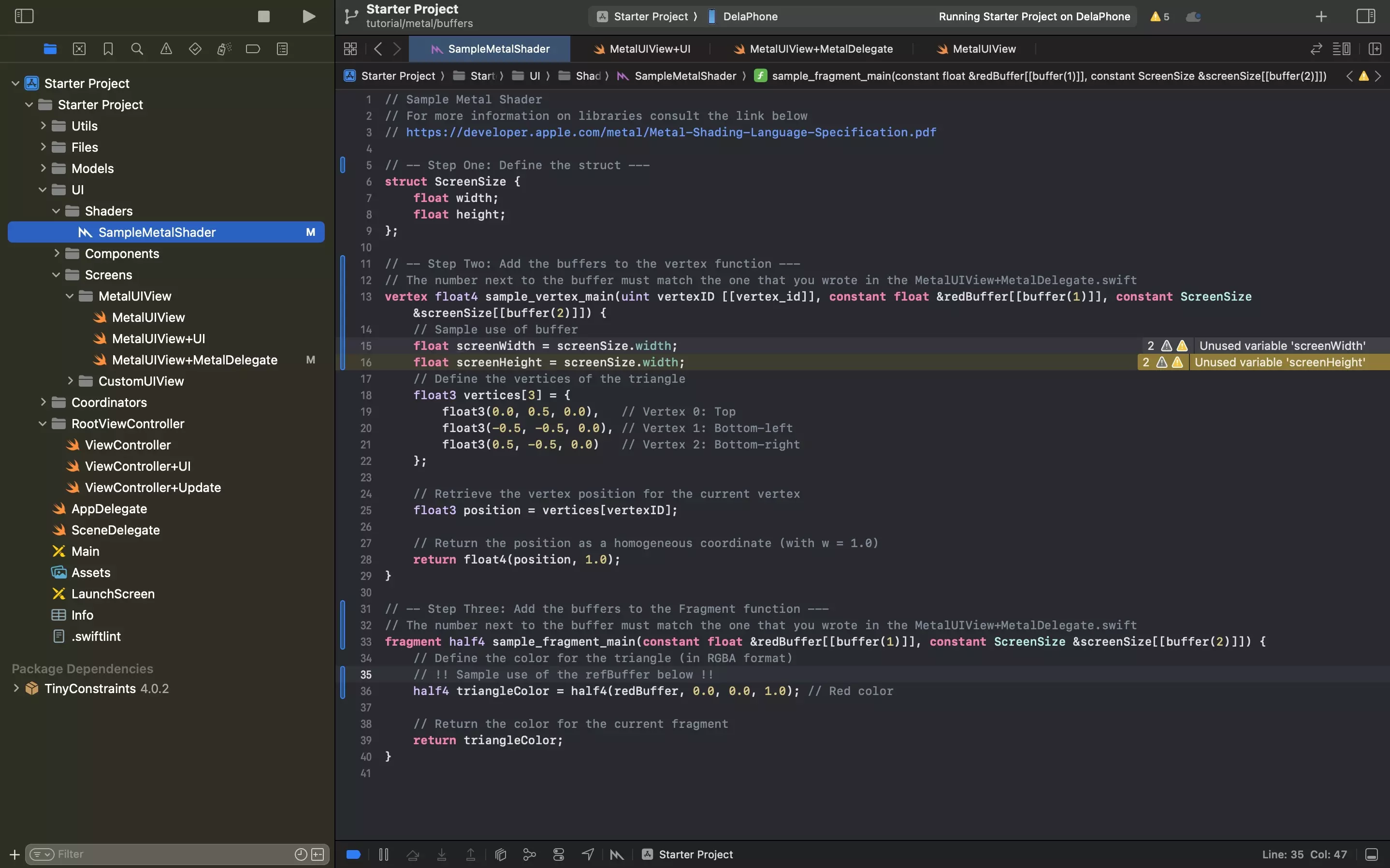
Declare the struct that you used in Step Two, Part B within the metal shader and update the vertex and fragment functions to include arguments for the functions passed in Step Two.
Please note that the number used within the buffer must match that the "index" that you wrote in Step Two (i.e. red must be buffer(1) and screenSize must be buffer(2)).
These variable or struct buffers can now be used in similar ways to the way they are used in Swift.
Step Four: Test
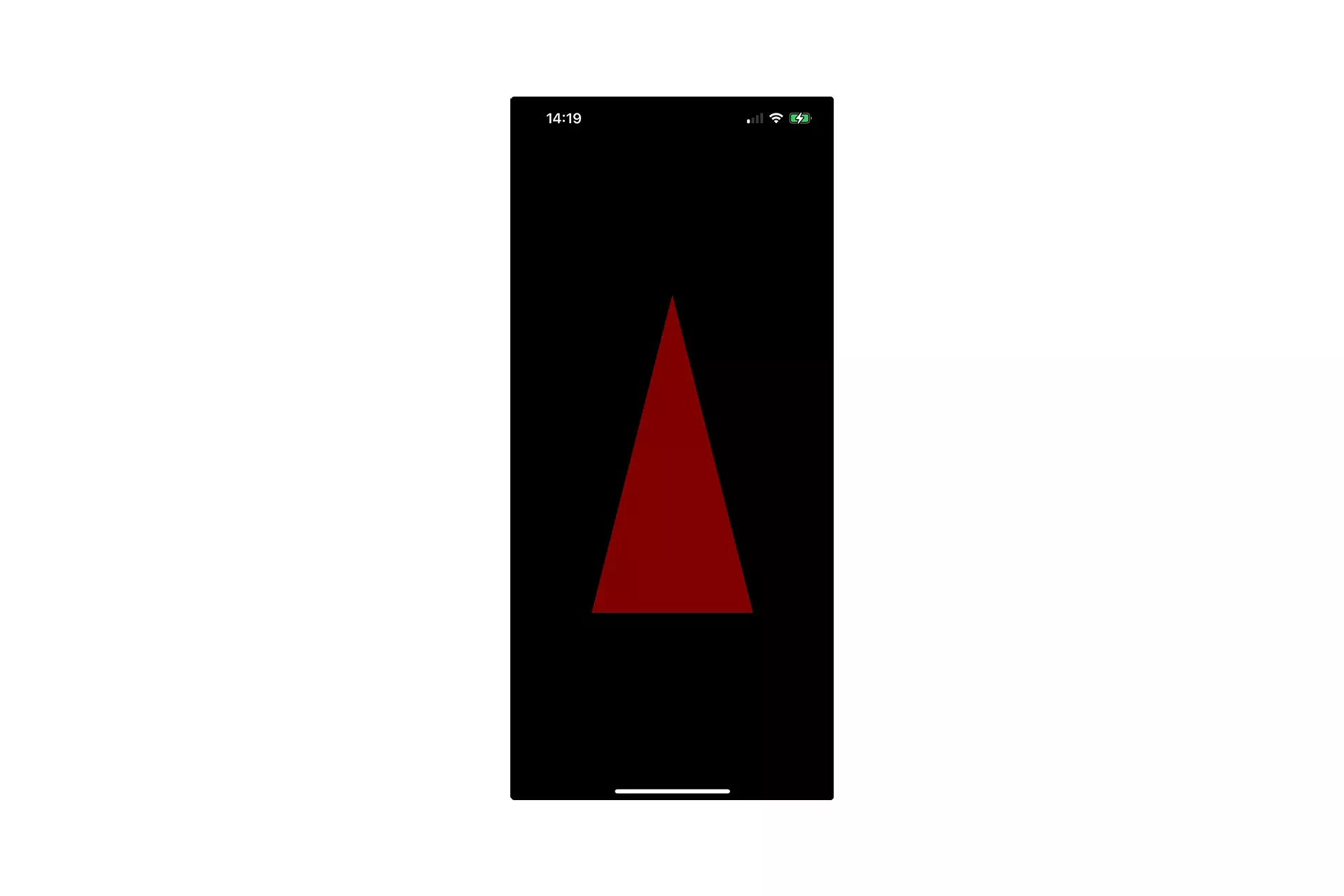
Run the code on a device and confirm that the shader works as expected.
Looking to learn more about things you can do with Swift, Metal and XCode ?
Search our blog to find educational content on learning how to use Swift, Metal and XCode.